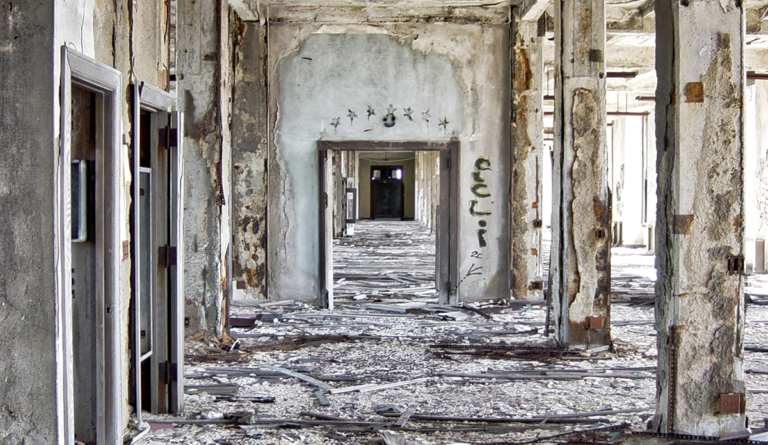Ghost of Home Construction Past
The city of Detroit is in a unique position to offer insight into the prevalence of asbestos in older homes while taking responsibility for demolition.

Read Time: 3 minutes
Published:
Although asbestos is banned in over 60 countries, it has never had a lasting federal ban in the United States. Asbestos was briefly banned in 1989 as part of the Toxic Substances Control Act. The prohibition was overturned by a New Orleans federal appeals court two years later, ruling that the Environmental Protection Agency (EPA) should have first looked into less-restrictive regulation.
A surprising number of older homes in the United States were built with materials containing asbestos. The heat-resistant mineral was used in residential construction for over a century and can still be found in floor tiles, roofing shingles, exterior siding, plumbing insulation, attic insulation, textured ceilings, caulk, and even drywall. Use of asbestos in home construction only slowed in the 1980s as its link to fatal respiratory illness and cancer became apparent. Malignant mesothelioma, the fatal lung cancer caused only by asbestos, still causes around 3,000 deaths every year in the US.
The exact number of homes containing asbestos is unknown. However, 74 million homes were built before or during the 1970s, a time when the US was using over 700,000 tons of asbestos annually.
The city of Detroit is in a unique position to offer insight into the prevalence of asbestos in older homes. Detroit’s population has been steadily decreasing in recent years. Consequently, the city has a growing number of abandoned homes. Abandoned homes can become fire hazards, so the city of Detroit has taken responsibility for demolishing them.
The University of Michigan looked at inspection reports from over 600 Detroit houses and found that 95 percent contained asbestos, most commonly in flooring, roofing, siding, and duct insulation.
Prior to demolition, the city inspects and removes all asbestos because it can be released into the environment and inhaled if a home is demolished or burned. The EPA reports there is no safe level of exposure to asbestos. Inside our lungs, the fibers become embedded, causing scarring that can eventually lead to debilitating illness and death 20-70 years after initial exposure.
The University of Michigan looked at inspection reports from over 600 Detroit houses and found that 95 percent contained asbestos, most commonly in flooring, roofing, siding, and duct insulation.
Abatement can be costly. The average cost of abatement for the houses in Detroit was almost $3,000, but it can exceed $20,000 depending on the amount and type of asbestos. Many states require disclosure of known asbestos-containing materials to potential buyers but do not require inspection. If left undetected, new homeowners risk unknowingly exposing themselves or facing the cost of inspection, testing, and abatement.
New Jersey has taken steps to become the first state to pass a total asbestos ban. Meanwhile, the Trump administration has fought to loosen federal regulations, passing a Significant New Use Rule in 2019. The United States still imports over 300 tons of asbestos every year.
Photo by Daniel Tuttle on Unsplash



